Many dogs really enjoy wildly running and barking, especially when on the other side of a fence from one or even many other dogs. Yet, many people are against this. Some believing it will make their dog aggressive, with others simply horrified at that wild behavior.
Why Let the Dog Run?
For many fear-aggressive dogs who are interested in active play, this can be used as an effective and efficient therapy for initially teaching self-control and reducing their fear. There are many dogs who become very reactive on seeing other dogs, with this worsening the closer they come. This game gives them the opportunity to come much closer, but in a safe environment where they can control the distance.
Some dogs love to run but have few opportunities to run distances in games. This gives them a game that will rapidly burn off energy and give them a workout.
Some of the earliest games dogs learn may include chase-me and keep-away. Many dogs like being chased in fun, while others prefer to do the chasing. And a few just sit on the side and watch, or even ignore it all. The fence running is often a combination, where chaser and chasee can switch at any time, or they can both stay about equal.
How the Game is Played
With one or more dogs on each side of the fence, there’s a bark or growl, followed by a run, and the other dog starts to chase. Unlike a simple chase, they don’t have to hold back but can display all the ferocity they can bring up, with all the dogs knowing there’s no intention to fight here.
With a bunch of dogs on one side, some will end up bumping into others, but a hard rule is no redirected aggression allowed against any other dog on your side. The newbies often have to be watched, and sometimes pulled out for a few breaks. But most dogs learn the rules pretty quickly, as following those rules gets them the most fun.
Of course, if all the dogs lack social skills, there may be more fighting than chasing. On that, articles abound on How to Stop Dog Fence Fighting, like this from the AKC. Rather sad, however, that the AKC blames the behavior on the dogs being territorial, instead of boredom and lack of social skills.
You Are Like You Act?
All that wild running and barking, where you keep showing your teeth so much! I’m sure, just so sure, that you really want to tear that other dog apart! And if you didn’t before, this behavior will teach you to do just that!
Except, this doesn’t happen with football or soccer, and the reason is following the rules. Sure, there’ll be a few mistakes, but mostly the players will learn the self-control needed to manage their play.
Good Dogs Are Always Calm
Oh, for sure, there’s nothing wrong with running after a ball I throw. But running back and forth by the fence while loudly barking is just not acceptable behavior. A good dog is always calm and well-mannered. You should only become very excited when I feel you should become excited.
I’ve even seen some dog trainers who strongly believe in all of that. And some claim this is all for the good of the dog.
Prey Drive may actually be Play Drive
In many dog parks, the smaller area has signs designating it for the smaller dogs. Because of this, it’s fairly common to see a group of medium and large dogs running on one side, and a single, little Chihuahua running on the other side. We used to have two Chi’s that came in there, where only one loved to fence run. One day, after a long and tiring run, his owner brought him into the large area, with all the big dogs.
They immediately ran over to sniff and greet him, as he was just their most favorite little pal. All on their best behaviors, and no running him without the fence there, so the little guy doesn’t get hurt.
For a purported expert opinion on that, see A Deadly Game: Fence Aggression. Just do not show that to the Chi!
Comes the Reactive Rottweiler
Belle was a pretty lady, but very excited and reactive on seeing any other dogs. At over 100 pounds, that often meant using two hands and bracing your feet. After some training on walks around the neighborhood, she learned to mostly calm down when passing other dogs. But learning to meet other dogs while on a leash is at least difficult, and often dangerous as the dog’s movement is constrained.
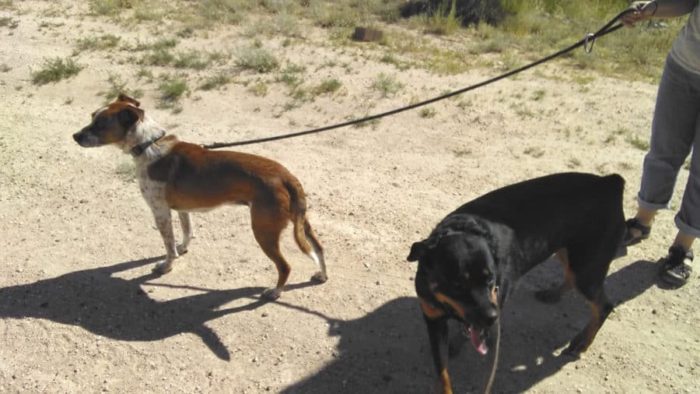
The first step here was to bring in an experienced training dog. This allowed checking her current manners, and teaching a few basic ones if needed.
Once she was ready we started walking by a busy dog park. First at quite a distance, then slowly closer. I eventually took her into the small dog area, so she could walk free and safely look at and sniff the other dogs. After a bit of excited dog barking and her running back-and-forth, it finally settled down a bit. Enough to calmly meet some new friends.

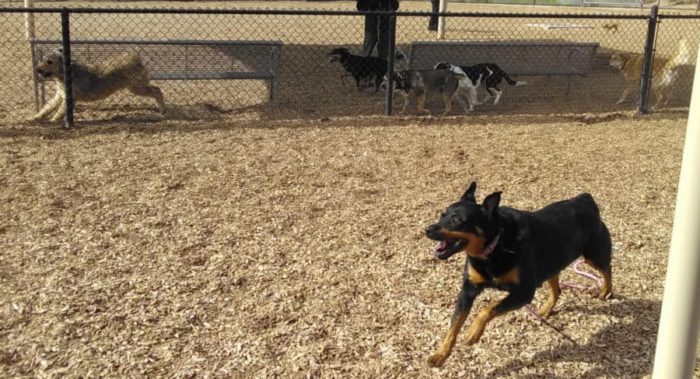
From that point, it went in fits and starts, with her briefly trying another run, then backing away to calm down and think about all of this. She wasn’t quite sure yet, but her new friends kept encouraging her.
The Fence Running Begins
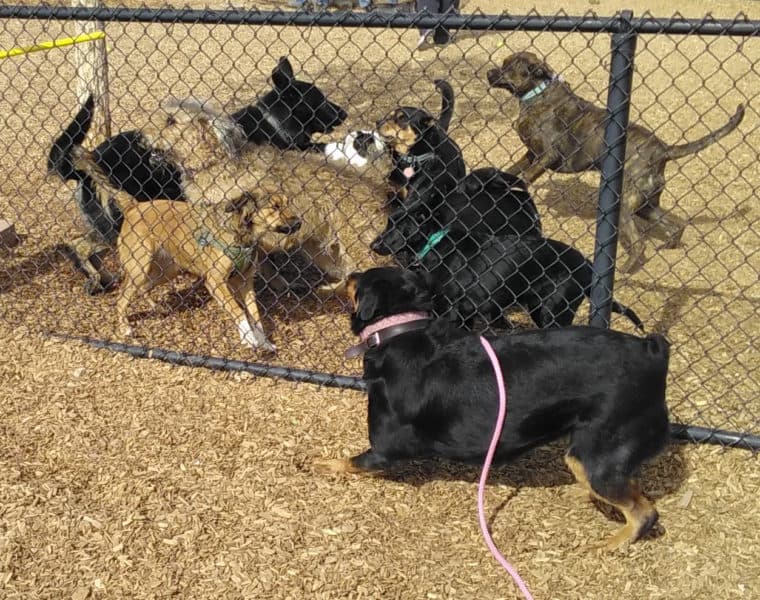
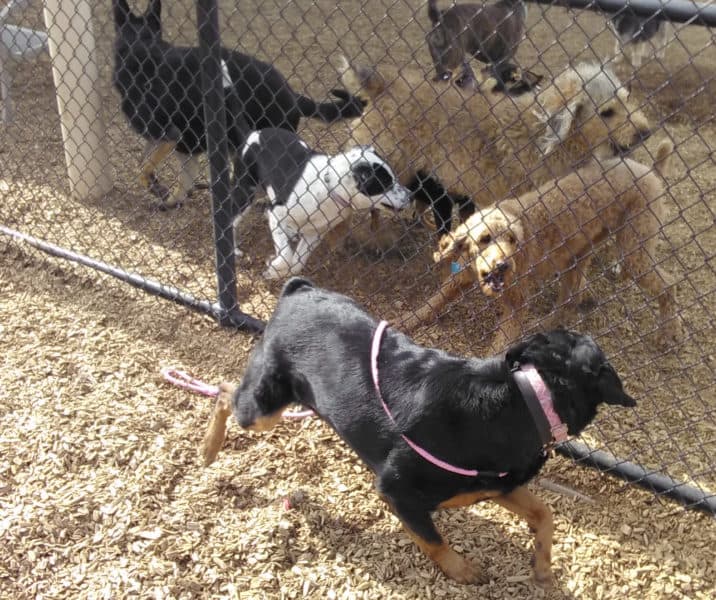
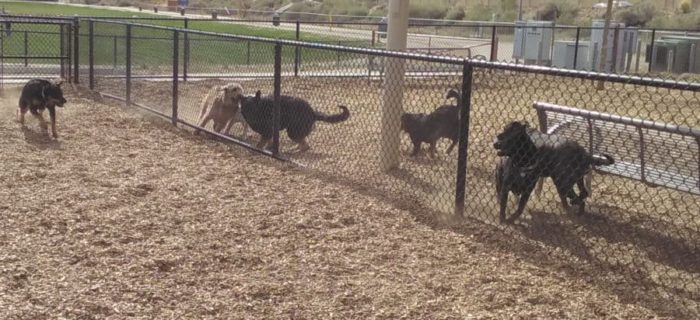
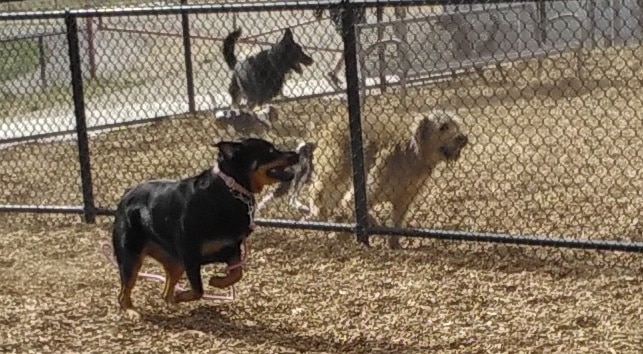
The Final Step, In With the Crowd
After a few more sessions the lady was clearly less excited, and far more in control. Besides the running, she looked forward to seeing her new friends. Calm enough that I started her with short trips inside the big area. Unlike the wild running by the fence, she started off being very quiet and a bit shy for a time.
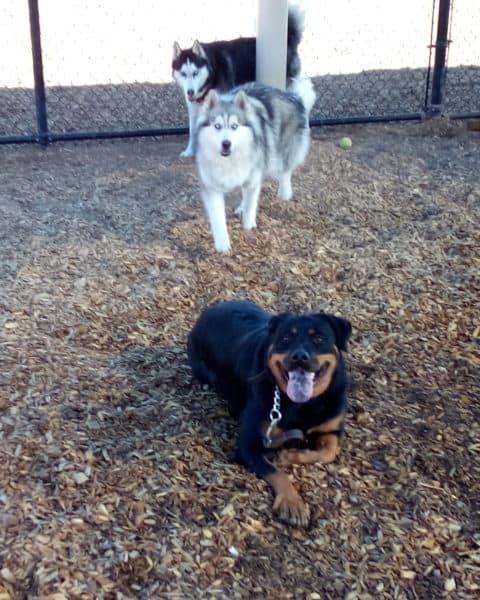
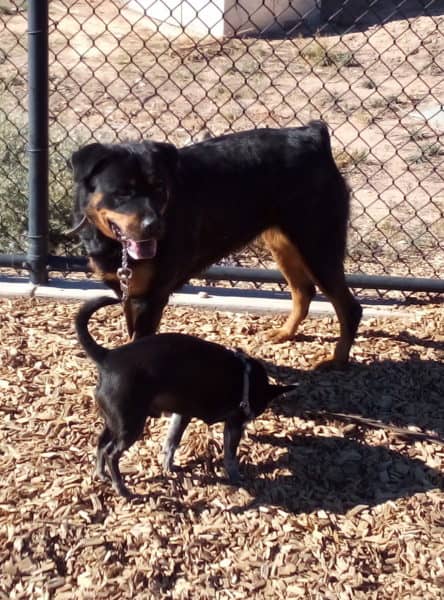
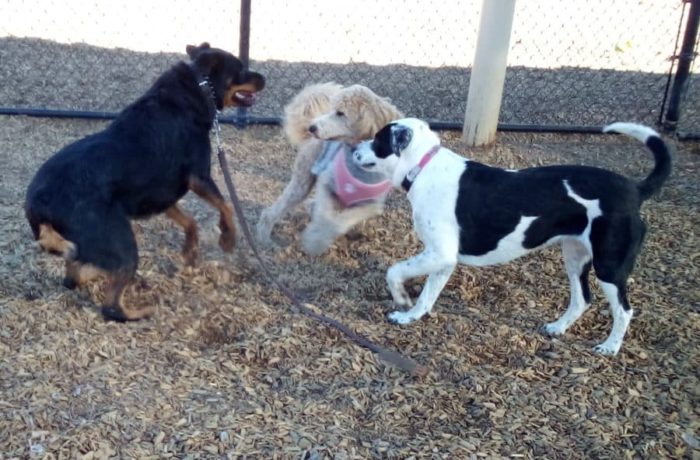
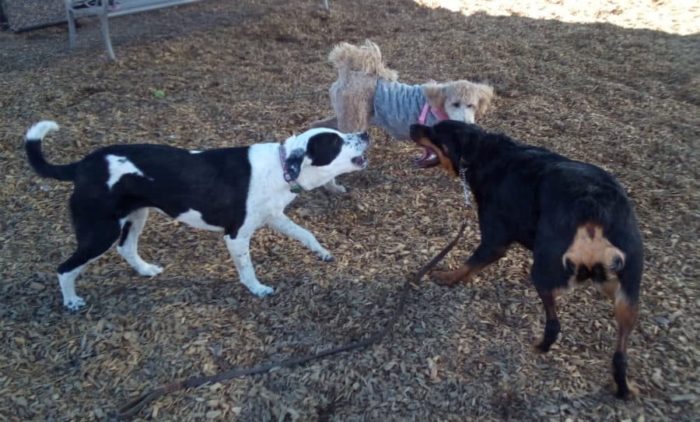
Her next big challenge was trying various play styles, learning some of them, and deciding which ones she liked the most. The same things that many of the dog park newbies have to learn over time. But after a dozen trips to the dog park and meeting all those new dogs, seeing or meeting dogs while on a walk was now just old hat. The lady was now confident in handling herself.
And Without the Fence Running?
In that case, I’d need to have her meeting some individual and carefully selected dogs until she had more control. Even watching other dogs from a distance is no substitution for the learning you gain from actually interacting. Sort of like the difference between watching a tennis game, and actually playing one.
With more advanced training and more time, we would have still gotten there. But this was a much faster, easier, and actually safer approach. And today she rarely does any fence running. But, that’s now her decision.
